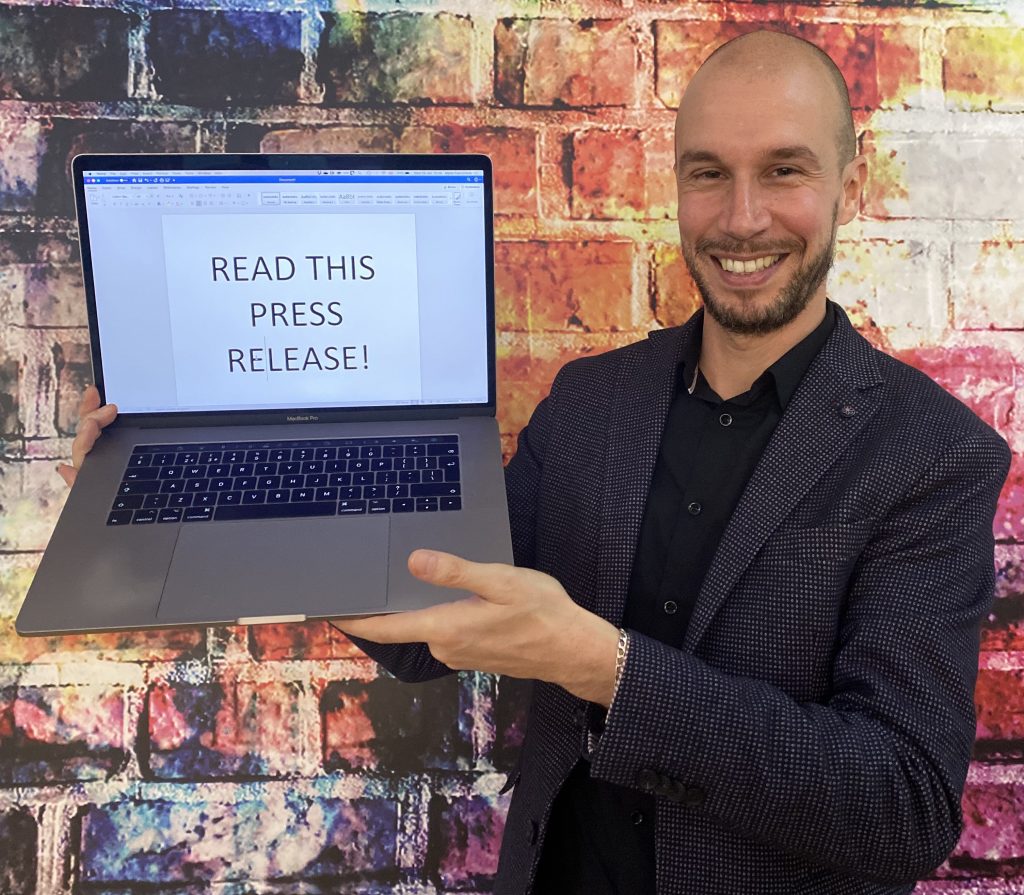So your company is doing something great, and you want the press to report on it. How do you get their attention?
Here’s some handy dos, and a few useful don’ts, on the art and science of writing – and sending – a press release.
Keep it simple
Put Press Release at the top of the page with the date below it. Beneath that, put Photo caption: (I’ll explain more about this later).
Once you start writing the main text, keep your paragraphs short, no more than four lines each. Fit the whole release on one page of A4, as that’s all you need to get your message across. It’ll help keep your writing tight, too.
At the very bottom, put ENDS and then your contact details below, as the last line.
Cut your intro down, then cut it again
An introduction should state exactly what the press release is about, in one or two sentences, but too often these are written in a rambling way.
Grab your audience’s attention immediately with introductions that don’t waste a word. For example:
- W is opening an office in Y, creating X many jobs
- Q has appointed Y to be its chief Z
- A, which does B, has donated €5,000 to the charity D
If you’re still struggling to get that right, here’s a tip.
Imagine you’ve been in a long meeting and have thrashed out the details of a new thing that your company is going to do. When you come out the room, you’re bursting for the loo. You’re just about to go into the toilets when someone stops you and asks what the outcome of the meeting was.
You really don’t want to wet yourself, so in just a few words you explain the main point of what’s going to happen. Then you dash through the toilet door and breathe a sigh of relief.
Whatever it was that you would tell your colleague, in that I-can’t-clench-any-tighter sentence, is what your intro should be.
Who/what/why/when/where
Journalists should answer those questions in any news story, so do the same in your release.
Who is doing something, what are they doing, why are they doing it, when is it happening and where is it taking place? You can mix the order of these questions up but answer as many as you can. Don’t forget to explain what your company does (not everyone will have heard of you) and where you’re based.
Also, consider carefully the topic about which you’re writing. Did your big launch happen last week? It may be too late for a news site to cover. Previews are always better than retrospective reports.
Now here’s the big one, the obstacle that many a press release has tripped over. Is the topic really that interesting to anyone outside of your company? What’s the value of telling your story to the public? Be brutally honest and ask yourself – would I stop and read this article?
I once received a press release about a CEO cycling across India for charity. Although that’s very worthwhile it is, to be brutally frank, something plenty of people do. But the real problem was that he’d trundled his way across this part of the subcontinent a few months before. He was back in the UK and picking out new tyres for his bicycle by the time the press release was even sent out.
And I quote…
The cleanest and best format for introducing a quote is:
- Name, job title, said:
- (For example) Koen Bongers, head of search at Blexr, said:
I prefer lower case for job titles, but it depends on house style.
Using other methods of introduction are clumsy and generally out of sync with what the mainstream media use. Check out the news websites that you’re pitching to, especially the non-industry ones. They don’t use:
- commented/commenting on…
- remarked/remarking on…
- posited that…
- spoke (e.g. “Joe Bloggs spoke on the move…”)
Don’t be afraid to tidy up your colleagues’ quotes for them, although get final approval. Cut out phrases like:
- I think
- What can I say
- I would like to take this opportunity
- In terms of
- In order to
- Going forward
They’re all vastly overused and don’t actually add anything of value. Your quotes will be far fresher if they sound like they’re coming from a real person, not a robot.
Once you’re finished writing, spell check. Then check it visually again, in case you have hidden typos like “there” instead of “their”. Have a break from the writing and come back to it with fresh eyes, so you pick up any typos like these.
Picture perfect
This is actually my main tip – providing a photograph can really improve your chances of getting coverage, but most press releases fail to include any kind of image.
This means your story will end up featuring a bland stock photo of an office worker who’s suspiciously handsome and is bathed in so much soft light that he might actually be an angel.
Grab some of your real, non-holy staff together and take a clean shot of them with a plain background. It’ll look much more authentic. If you’re not comfortable with a camera, find out which of your staff are keen Instagrammers, and use their skills.
(Be sure to not photograph any screens or noticeboards in the background, in case they contain sensitive information, and make sure those featured are GDPR compliant.)
Here’s a picture I took after Blexr won the EGR Nordics awards. We gathered the relevant team together, got our logo in the background and added a prop showing our company slogan. This picture then appeared across many industry publications, along with our press release.
The caption, explaining who is in the photo, should be at the top of the page, just below where you’ve put the date. Double check that you’ve spelled everyone’s name correctly.
Right time, right desk
When I was a reporter at the BBC, writing online news stories, I’d receive press releases about a company that had developed a new tech product, or created some innovative piece of software, or had the result of a survey about the rising costs of running a small business.
But I wasn’t the best recipient, as there were specialist journalists who dealt with those topics (I’d forward these emails on, but not every journo will do that).
Make sure your email is sent to the right type of publication and the best newsdesk, and if possible have regular contact with a specific journalist, so you’ve a target to (politely) aim at whenever you’ve got news to share.
It’s a good idea to send your release first thing in the morning, because journalists will come to work looking for things to write about.
Even better, if they’ve a morning editorial meeting (which the better publications will have) then they can pitch your story in that forum, which could see it get a bit more attention and it’ll be up on their website for the lunchtime traffic spike.
And if you email a specific journalist, don’t get their name wrong. I’ve been called Maria several times in emails which had a press release attached. Not the best way to create a good first impression.
Stop the press!
Now you have guidance on how to create clean, presentable press releases with tight intros, fresh quotes and accompanied by a strong image. You also now know how to best approach the right journalist at the correct newsdesk.
Go make some headlines.
ENDS
You can contact Mario Cacciottolo via his LinkedIn account.



